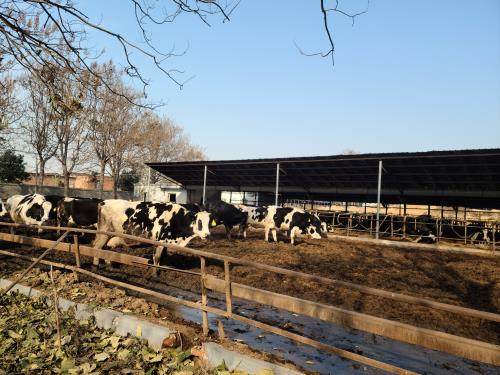In the realm of veterinary medicine, imaging technologies have undergone profound transformations, leading to enhanced diagnosis and treatment of diseases in animals. Among these technologies, the bovine ultrasound machine has emerged as a critical tool for veterinarians, particularly in the management of livestock health. This essay explores the significance of bovine ultrasound machines, delving into their operational principles, practical applications, advancements, and the implications for livestock management.
1. Understanding Bovine Ultrasound Machines
Bovine ultrasound machines employ high-frequency sound waves to create images of the internal structures of cattle. The basic principle involves the transmission of ultrasonic waves into the body; when these waves encounter various tissues and organs, they reflect back to the machine, where they are transformed into visual representations known as sonograms. The non-invasive nature of ultrasound technology offers several advantages, including minimal discomfort to the animal and the ability for real-time imaging.
2. Applications in Veterinary Medicine
The applications of bovine ultrasound technology are manifold and extend across various aspects of veterinary care and cattle management.
Reproductive Health: One of the primary applications of ultrasound in bovine medicine is in reproductive health management. Ultrasound enables veterinarians to conduct early pregnancy diagnoses, assess the viability of embryos, and identify ovarian cysts or other reproductive anomalies. Early detection of pregnancy can lead to better herd management, allowing ranchers to make informed decisions on breeding schedules and reducing the likelihood of open cows, which can significantly impact productivity.
Health Monitoring: Bovine ultrasound machines play a pivotal role in monitoring the health of cattle by facilitating the diagnosis of internal injuries and diseases. Conditions such as liver abscesses, rumen disorders, and heart diseases can be identified with greater accuracy through ultrasound imaging. By integrating ultrasound into their diagnostic arsenal, veterinary professionals can devise appropriate treatment plans promptly.
Growth and Development: In the context of beef cattle, ultrasound technology can be utilized to assess carcass composition and fat deposition, informing producers about the optimal time for slaughter. This application not only enhances the profitability of beef production but also aids in the promotion of animal welfare, as ranchers can optimize feeding practices and improve overall growth conditions.
3. Advancements in Bovine Ultrasound Technology
The field of bovine ultrasound technology has experienced significant advancements in recent years, contributing to its efficacy and user-friendliness. Modern bovine ultrasound machines are characterized by several enhanced features, including:
Portability: Many contemporary bovine ultrasound machines are designed to be portable, allowing veterinarians to perform examinations in the field rather than requiring a visit to a clinical setting. This portability not only saves time but also reduces stress on the animals, as they are often more comfortable in familiar environments.
Image Quality: Advances in imaging technology have led to higher resolution images, enabling more accurate assessments of internal structures. This improvement is crucial for differentiating between healthy tissue and pathological changes, facilitating more precise diagnoses.
User Interfaces and Software: The incorporation of advanced software and user interfaces has revolutionized ultrasound usage. Features such as automated measurements, digital archiving, and analysis tools not only streamline the process but also enhance the interpretation of ultrasound images. Training and the ease of use of these systems have widened accessibility, enabling even those practitioners who may not specialize in ultrasound technology to employ it effectively.
4. Implications for Livestock Management
The implications of bovine ultrasound technology are profound, extending beyond individual animal health to impact the broader context of livestock management. Effective utilization of ultrasound machines contributes to improved herd health, which, in turn, can lead to increased productivity and profitability. By identifying reproductive issues early, veterinarians can assist farmers in maximizing breeding efficiency, thereby enhancing genetic improvement and overall herd quality.
Moreover, the preventative nature of ultrasound diagnostics allows for timely interventions, reducing the likelihood of severe health complications that could lead to increased veterinary costs or, worse, loss of livestock. The ability to monitor animal health and development closely also feeds into larger regulatory frameworks aimed at ensuring food safety and quality. With rising consumer awareness around animal welfare and sustainable farming practices, the role of technology in promoting humane and efficient farming cannot be overstated.









